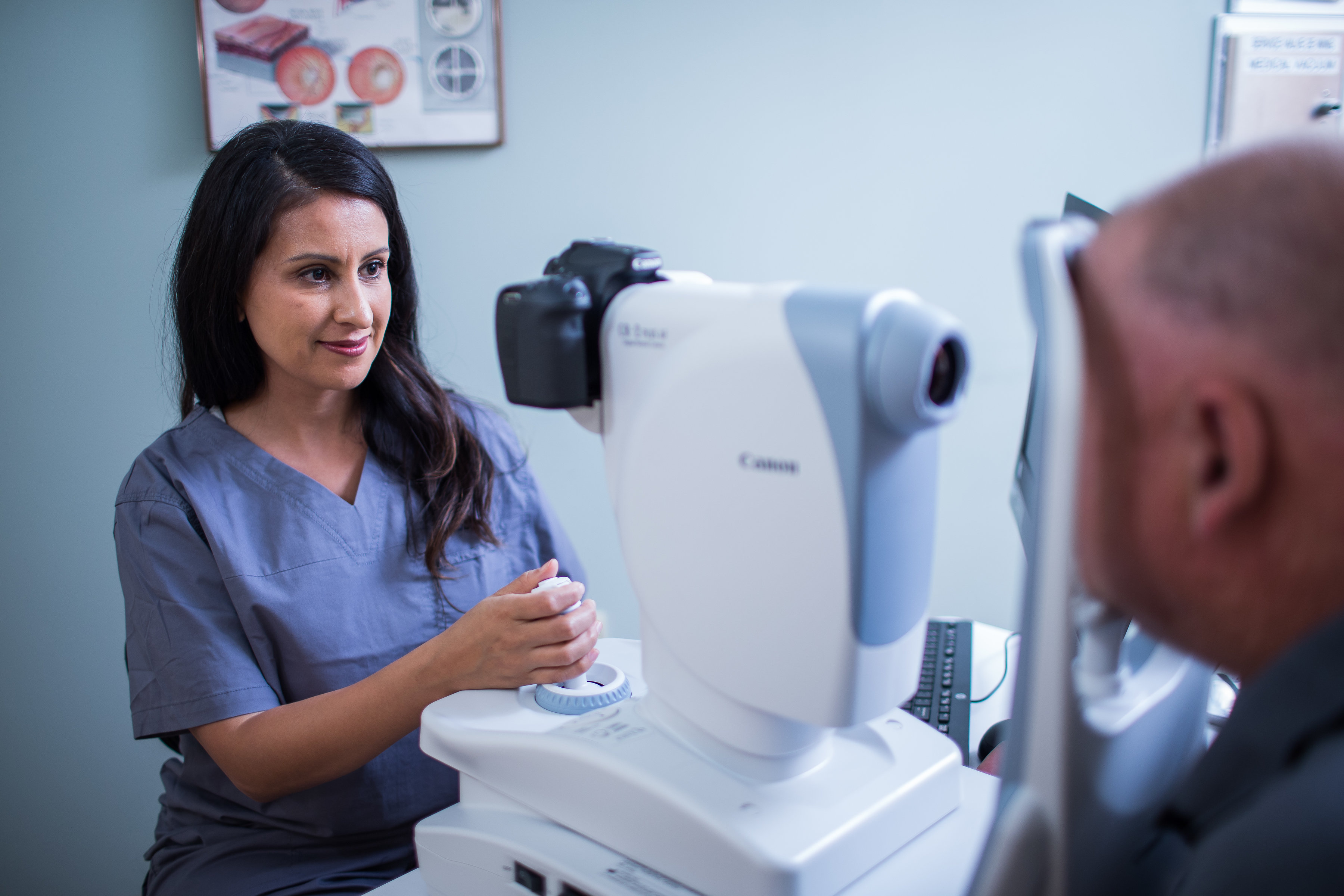Andalusia Eye Center: Premier Services for Vision Correction
Andalusia Eye Center: Premier Services for Vision Correction
Blog Article
The Advantages And Disadvantages of Various Refractive Surgical Treatments for Improved Eyecare

LASIK Surgical Procedure
LASIK surgical procedure is a frequently done refractive treatment that aims to deal with vision problems such as nearsightedness, astigmatism, and farsightedness. Throughout the treatment, a thin flap is created on the cornea, and a laser is made use of to improve the underlying tissue, fixing the refractive mistake.
One of the key benefits of LASIK surgical procedure is the fast renovation in vision experienced by several clients. It is vital for people taking into consideration LASIK surgery to undertake an extensive examination by an eye care expert to figure out if they are ideal prospects for the procedure.
PRK Procedure
The PRK procedure, likewise understood as Photorefractive Keratectomy, is a kind of refractive surgical procedure that intends to deal with vision problems similar to LASIK surgery. Unlike LASIK, which entails developing a flap in the cornea, PRK works on the surface layer of the cornea.
One of the benefits of PRK over LASIK is that it removes the threat of flap-related problems since no flap is created during the surgical procedure. Regardless of the longer healing duration, PRK can be an ideal choice for people seeking vision correction surgical procedure.
SMILE Surgical Procedure
A cutting-edge refractive surgical procedure strategy acquiring popularity in the area of ophthalmology is SMILE Surgery. Little Laceration Lenticule Removal (SMILE) is a minimally invasive procedure that fixes vision by improving the cornea using a femtosecond laser. Unlike traditional LASIK surgical treatment, SMILE Surgical procedure entails creating a tiny cut in the cornea to draw out a lenticule, which results in less interruption to the corneal framework and potentially much faster recuperation times.
Among the key benefits of SMILE Surgical treatment is its capability to treat myopia (nearsightedness) and astigmatism with high precision, bring about exceptional visual results for people. The minimally invasive nature of the procedure also lowers the threat of complications such as completely dry eye disorder, making it a favorable alternative for people seeking refractive surgery.

LASEK Strategy
Having discovered the advantages and factors to consider of SMILE Surgery, an additional noteworthy refractive surgical procedure strategy worth taking a look at is the LASEK Technique. LASEK, which stands for Laser-Assisted Subepithelial Keratectomy, is a form of laser eye surgical treatment that intends to deal with refractive errors such as myopia (nearsightedness), hyperopia (farsightedness), and astigmatism.
Unlike LASIK, LASEK does not involve producing a corneal flap. Rather, throughout a LASEK procedure, the doctor makes use of a diluted alcohol service to loosen up the thin outer layer of the cornea, recognized as the epithelium.
Among the primary advantages of LASEK is that it can be ideal for people with slim corneas who might not be great prospects for LASIK. Furthermore, LASEK normally leads to marginal post-operative pain and a quicker recuperation time contrasted find this to PRK. The aesthetic recuperation process with LASEK may be slightly longer than with LASIK.
Implantable Call Lenses
Implantable Get in touch with Lenses supply a long-lasting vision improvement solution for individuals looking for a choice to typical call lenses or glasses. These lenses, additionally referred to as phakic intraocular lenses, are surgically placed into the eye to fix refractive mistakes such as myopia (nearsightedness), hyperopia (farsightedness), and astigmatism. neurologist Andalusia. Unlike standard call lenses that rest on the surface of the eye, implantable contact lenses work within the eye itself, supplying clear vision without imp source the demand for everyday maintenance or elimination
One of the vital benefits of implantable contact lenses is their permanence. As soon as placed, they can continue to be in the eye indefinitely, supplying consistent and stable vision modification. In addition, these lenses can be a superb alternative for people that are bad prospects for laser eye surgical procedure or who prefer a reversible vision modification treatment.
Nonetheless, implantable contact lenses do lug some risks, consisting of the possibility for cataracts or raised eye stress. It is important for individuals considering this choice to seek advice from an eye treatment expert to establish if implantable get in touch with lenses are the ideal choice for their details needs and eye health.
Conclusion
Finally, each sort of refractive surgical procedure has its very own advantages and disadvantages. LASIK surgery is preferred for its quick recuperation time, while PRK procedure may appropriate for people with thin corneas. SMILE surgery provides minimal pain throughout the treatment, yet LASEK method may have a longer healing procedure. Implantable contact lenses supply a choice for those who are not suitable candidates for standard surgeries. Clients should seek advice from their eye care provider to figure out the most effective option More about the author for their private needs.

On The Whole, SMILE Surgical treatment provides an appealing alternative for people looking to improve their vision via refractive surgery.
Report this page